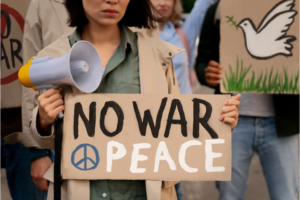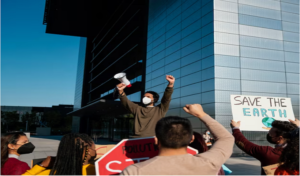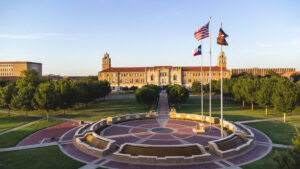Investigating the aftermath of war and peacebuilding efforts

People have always had to deal with the pain of war and its consequences. War has effects on people and groups that go far beyond the battlefield and last for a long time. It’s important to have successful peacebuilding efforts after a war to help rebuild communities and make peace last. This is especially true in the U.S., where war wounds are still visible.
In this blog, we’ll look into the aftermath of war and attempts to make peace in the United States. We’ll talk about how war affects society and how hard it is to start over after a war. We’ll also look at case studies to show the different ways to build peace and how technology can help these efforts. Last, we’ll talk about the future of reconciliation in the United States and what different groups can do to adapt to new problems.
Even though war and building peace are important topics, we’ll try to add some humour to the conversation. To make a serious subject more available and interesting, it’s important to approach it in a funny way. By looking at the aftermath of war and attempts to build peace in the US, we can learn more about the problems and how we can work together to make the world a safer place.
What war does to society
You can’t say enough about how war has changed life in the United States. Conflicts have effects that go far beyond the battlefield and last a long time for both communities and people. War can leave deep mental scars that can take years to heal, and being forced to move can uproot families and change the way society works. War also tends to mess up the economy, making it hard for businesses and towns to get back on their feet after all the damage.
Examples from past wars in the United States show how terrible war is for society. For example, the Vietnam War caused permanent trauma for millions of Americans and led to large-scale protests against the war. Millions of Iraqis had to move because of the Iraq War, and the economic damage from both wars is still being felt today. By knowing how war affects society, we can better understand how important it is to build peace in a way that helps communities heal and create lasting peace.
The difficulties of making peace
Rebuilding after war and making a permanent peace is a hard process that is full of problems and roadblocks. One of the hardest parts of making peace in the US is dealing with the things that make people fight, like poverty, injustice, and political division. Another problem is building trust between different groups and making sure that everyone has a say in the process of making peace.
In the process of building peace, many different groups, such as the government, NGOs, and local communities, play important roles. Peacebuilding efforts can get help and resources from the government, and NGOs can give their expertise and help on the ground. Local communities, on the other hand, are often the ones most affected by violence, and they have a huge say in how peacebuilding efforts are directed. By working together, these groups can help make the world a safer and more fair place after a war.
Case studies
Case studies are a great way to show what happens after a war and how hard it is to make peace in the US. They let us see how conflicts affect specific groups and people, and they show how different people’s experiences are across different conflicts and areas. It is important to choose case studies that show different parts of the topic, such as differences between urban and rural areas, different types of conflicts, and different ways to build peace.
In the United States, some examples of case studies are the effects of the Civil War in the South, the effects of the Iraq War on both urban and rural areas, and the difficulties of making peace after the 9/11 attacks. Each of these case studies shows how complicated the process of building peace is and how important it is to take a broad and inclusive approach to making peace last.
How tech plays a part
Technology has the ability to be a very important part of making peace in the United States. For example, improvements in communication technology have made it easier for different groups to meet and work together on peacebuilding projects. Online courses and e-learning platforms can also help people from different groups understand each other and talk to each other.
Technology can also help people get along with each other better. For example, digital platforms can help make peace talks easier by giving people a safe, neutral place to talk. Tools for data analysis and visualisation can also help find areas of conflict and come up with specific ways to deal with them. By using technology in these ways, attempts to build peace can be made more effective, efficient, and open to more people.
The future of making peace
The future of peacebuilding in the United States is not clear, and new problems could make it harder to build permanent peace. For example, climate change is likely to make current conflicts worse and start new ones, while political polarisation could make it harder to find common ground and work together on peacebuilding projects.
To deal with these problems, parties will have to be creative and come up with new ways to build peace. This could mean looking into how new technologies, like bitcoin and artificial intelligence, can help with efforts to build peace. It could also mean putting more attention on community-based projects and grassroots efforts to build trust and make it easier for people to talk. In the end, the success of efforts to build peace will rest on how well different groups can adapt to new problems and find new ways to work together for a more peaceful future.
Conclusion
In the end, it’s important to look into what happens after wars and how peace is made in the US. It helps us understand how war affects towns and people, as well as how hard it is to put things back together after a war and make peace last. Through case studies, we can see how different situations are in different conflicts and parts of the world, as well as how complicated the process of making peace is.
Stakeholders like the government, NGOs, and local communities are very important to the process of making peace, and technology can be a big help. But new problems like climate change and political polarisation will make it important for people involved in healing to be creative and try new things.
Overall, you can’t say enough about how important it is to look into what happens after a war and how peace is made in the US. By doing this, we can learn more about the challenges and chances we have to build a more peaceful and fair society. I think you should read more about this topic, such as academic journals, reports from non-profit organisations, and government reports, to learn more about the problems and possible answers for the future.
Read More You May Like:








